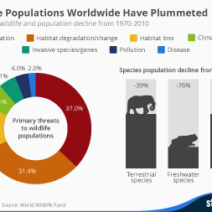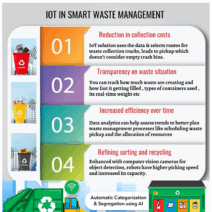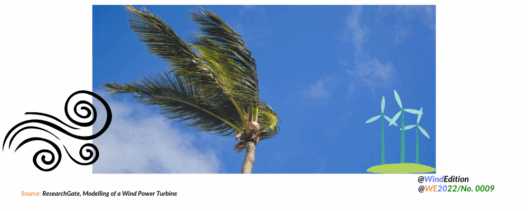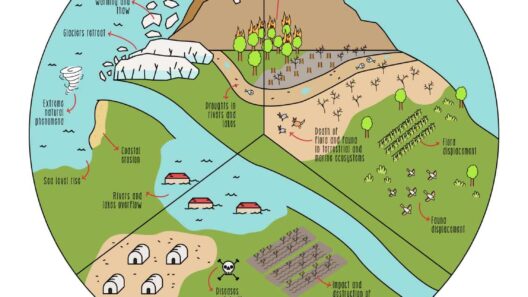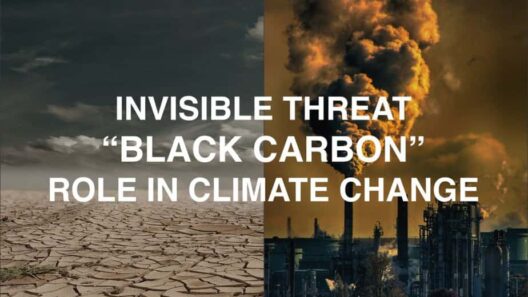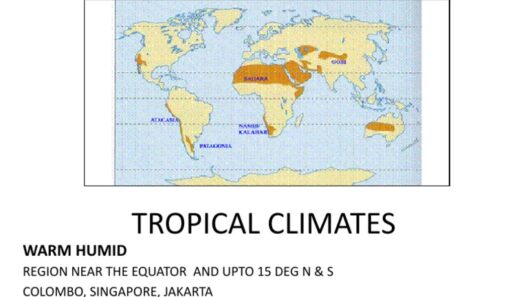The discourse surrounding climate change often oscillates between urgency and complacency. Yet, as scientific consensus mounts over the inexorable impacts of this global phenomenon, the question arises: Can climate change truly culminate in the end of the world? A deep dive into this provocative inquiry unveils not only the stark realities of our planetary plight but also the aesthetic intricacies that underscore our relationship with this existential threat.
To fully grasp the ramifications of climate change, one must first understand its multifaceted nature. It is an omnipresent specter that influences meteorological patterns, ecological balances, and even human health. Advocates for change often cite alarming projections—rising sea levels, intensified natural disasters, and biodiversity loss—that coalesce to paint a grim picture. However, to paint climate change merely as a harbinger of doom would be to overlook the nuances and potential for resilience within nature and humanity alike.
Let us navigate through this complex labyrinth, exploring the hard questions that define our current climate conundrum.
Understanding Catastrophic Impact: The Unraveling Tapestry of Life
Climate change is not a singular event, but a cascade of interlinked phenomena disrupting the intricately woven fabric of ecosystems. The biodiversity crisis—a symbiotic relationship between species survival and climate stability—is exacerbated by anthropogenic actions. Species extinction rates have soared to levels unprecedented in human history. Each species lost is another thread pulled from the tapestry of life, diminishing the resilience of our ecosystems. This inexorable alteration prompts a critical examination: are we witnessing the end of biological diversity as we know it?
Imagine the extinction of the keystone species upon which entire ecosystems depend. The ramifications ripple outward, affecting not just flora and fauna but also human livelihoods. Fisheries collapse under the weight of overfishing compounded by changing ocean temperatures. Forests, that act as carbon sinks, become desiccated and vulnerable to catastrophic wildfires. The resulting loss of habitats stretches far beyond the confines of the natural world—it tangibly affects human health, nutrition, and socio-economic stability.
In this scenario, one must confront the stark possibility of a world devoid of rich biodiversity—a world that, fundamentally, may no longer support human life as we know it. The intricate connections between species serve as a poignant reminder of the fragility of existence on Earth. Are we inching towards an irremediable cataclysm, or can we recalibrate our actions to avert this dystopian fate?
The Human Element: Societal Disintegration or Resilience?
At the heart of the climate change discourse is the human element, a double-edged sword. On one hand, humanity stands as a principal architect of climate change, driving industrialization and consumerism that exacerbate the problem. The anthropocene epoch reflects a period defined not merely by human existence but by our profound impact on the planet. Urbanization, deforestation, and fossil fuel dependency are not just abstract concepts; they translate into weather patterns that devastate communities and sow discord.
Conversely, humanity is also remarkably resilient. Communities worldwide have exhibited unwavering determination in the face of adversity. From grassroots movements advocating for renewable energy to technological advancements designed to mitigate carbon footprints, hope persists against a backdrop of despair. Social equity also comes into play—how climate action can advocate for marginalized communities often disproportionately affected by environmental degradation.
The critical inquiry arises: will our innate resilience be sufficient to withstand the impending climate crisis? Acknowledging the socio-political dimensions and learning from indigenous practices that respect the earth’s rhythms could illuminate pathways towards balance. However, complacency is not an option. The timing is propitious to foster global cooperation and innovative solutions that prioritize both environmental sustainability and human welfare.
On the Brink: The Path Forward
The trajectory we choose today could determine whether we flirt with disaster or embrace a path of recovery. The notion that climate change could spell the end of civilization is daunting, yet it is not an irredeemable narrative. The aesthetic allure of a resilient planet is within grasp, should we summon the collective will to act. Climate change serves as a crucible, testing human ingenuity and adaptability.
Investment in green technologies, reforestation initiatives, and sustainable agriculture embodies the transition towards a brighter future. Education plays an essential role; fostering awareness and literacy regarding environmental stewardship will empower individuals to become change agents. Each small action, each sustainable choice we make prompts ripples of change that can fuel a larger movement.
In conclusion, while the specter of climate change looms large over our civilization, it does not signal an inevitable demise. Instead, it poses a profound challenge to humanity’s moral compass, urging us to reassess our relationship with the Earth. The ultimate question remains: will we harness our creativity, resilience, and collective spirit to rewrite the current narrative, or are we destined to become reflections of our own neglect? The answers lie not in passive acceptance but in active engagement with one another and the world around us. The time to act is now.

